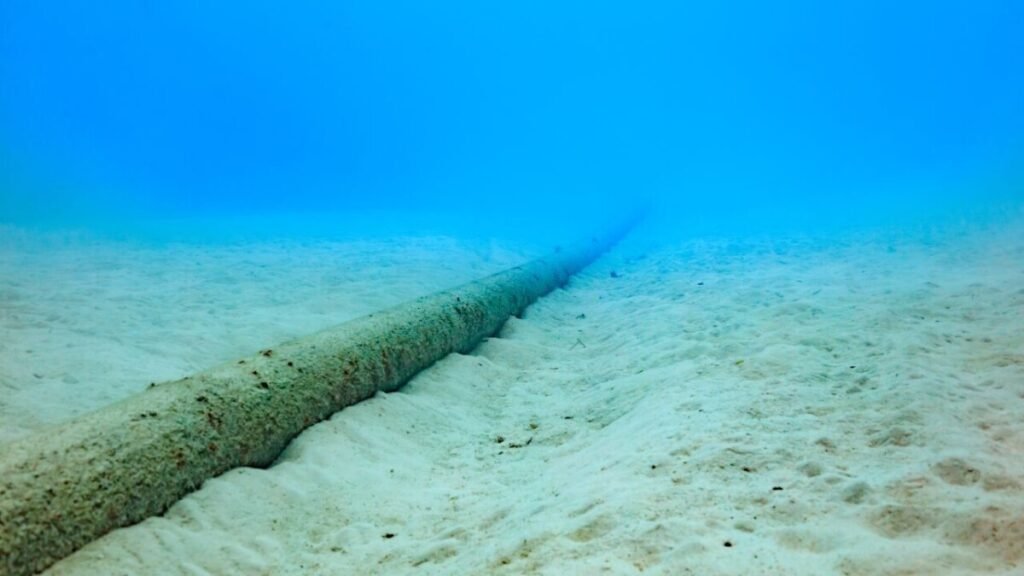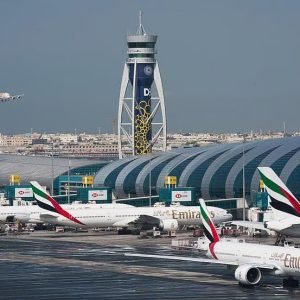Red Sea internet cable cuts have recently disrupted connectivity across Asia, the Middle East, and parts of Africa. Countries such as India, Pakistan, Saudi Arabia, Kuwait, and the United Arab Emirates experienced significant internet slowdowns, interruptions in cloud services, and disruptions to video streaming platforms. The event drew global attention because these cables form a crucial part of the international internet infrastructure.
While initial reports raised concerns about deliberate sabotage amid ongoing geopolitical tensions in the region, experts now suggest that the damage was most likely accidental. Analysis points to a commercial vessel dragging its anchor across the shallow seabed near the Bab el-Mandeb Strait, a strategic location where multiple undersea cables converge.
Why the Red Sea Cables Are Critical
The Red Sea region is one of the world’s most important telecom corridors. Several major submarine cables, including SEA-ME-WE-4, IMEWE, and FALCON GCX, pass through these waters, connecting Europe, the Middle East, and Asia. These cables carry a massive amount of global internet traffic and are essential for business operations, cloud services, real-time communication, financial transactions, and entertainment.

Damage to these cables can lead to widespread service disruptions, slow internet speeds, and increased latency. For countries heavily reliant on international connectivity through the Red Sea corridor, even minor interruptions can significantly affect daily operations.
Accidental Anchor Drag: The Most Likely Cause
Experts believe that the most probable cause of the Red Sea internet cable cuts was accidental anchor drag by a commercial vessel. The Red Sea’s shallow seabed makes submarine cables particularly vulnerable to damage from maritime activities. Anchor drags are a leading cause of submarine cable faults globally, accounting for a significant portion of cable disruptions each year.

While geopolitical concerns initially raised fears of sabotage, no evidence has been found to suggest deliberate attacks. The damage appears consistent with accidental mechanical disruption rather than targeted actions, underscoring the importance of awareness and safety measures in areas with high concentrations of submarine cables.

How the Cuts Affected Internet Services
The Red Sea internet cable cuts caused immediate disruptions in connectivity across multiple countries. Cloud platforms and web services reported increased latency and degraded performance, affecting businesses and individual users alike. Some internet services experienced intermittent outages, while others slowed dramatically due to rerouting traffic through alternative pathways.
Telecom authorities warned users of possible service degradation and advised businesses relying on real-time data to plan for interruptions. Increased traffic on backup routes caused additional latency and slower speeds, highlighting the dependency of global internet infrastructure on these undersea cables.
Technical Challenges in Repairing Subsea Cables
Repairing undersea cables is a highly complex and specialized operation. Locating and fixing damaged sections on the seabed requires advanced ships equipped with remotely operated vehicles (ROVs) and specialized tools. The Red Sea presents additional challenges due to navigation restrictions, shipping traffic, and regional geopolitical tensions.
Repairing the damaged sections of the Red Sea cables is expected to take weeks, if not months. The limited number of companies with the expertise and equipment to conduct deep-sea repairs contributes to the extended timelines. Meanwhile, affected regions may continue to experience reduced connectivity and slower internet speeds.
Understanding Subsea Cable Technology
Subsea cables are made of fiber-optic cores encased in protective layers to withstand water pressure, temperature variations, and mechanical stress. They are designed to last decades, but they remain vulnerable to human activity and natural hazards. Even minor physical disruptions, such as anchor drags, fishing activities, or natural events like earthquakes, can significantly impair connectivity.
Cables in the Red Sea carry terabytes of data per second, supporting cloud storage, streaming platforms, online banking, video conferencing, and e-commerce. Any damage, therefore, has a far-reaching impact not only on regional users but also on global internet operations.
Global Implications of the Red Sea Cable Cuts
The Red Sea internet cable cuts illustrate how a single accident can affect the global digital ecosystem. Countries heavily reliant on these routes faced slowdowns in international communications, delayed transactions, and disruptions to cloud-based services.
Businesses that depend on real-time data, including financial institutions, healthcare providers, and e-commerce platforms, were particularly affected. Even small interruptions in high-speed internet can lead to measurable economic impacts, highlighting the need for resilience and redundancy in the global internet network.

Preventive Measures and Risk Mitigation
The incident has highlighted the importance of proactive measures to safeguard critical internet infrastructure. Shipping companies operating in regions with dense subsea cable networks must exercise caution to avoid accidental damage. This includes adhering to anchor-free zones, careful navigation, and awareness of cable locations.
Telecom operators can reduce the impact of future incidents by building redundancy into their networks. Rerouting traffic through alternate cables, diversifying international connections, and establishing rapid repair response plans can help mitigate disruptions.
Preparing for Future Cable Incidents
Investing in global internet resilience has become increasingly critical. Governments and private companies can collaborate to create comprehensive monitoring systems, ensuring that any damage to undersea cables is detected quickly. Early detection allows for faster rerouting and repair planning, minimizing the impact on users.
Public awareness campaigns targeting shipping companies, fishermen, and local authorities can also help prevent accidental cable damage. The Red Sea incident shows that even minor oversight in densely cabled areas can have widespread consequences.
Conclusion: A Wake-Up Call for Global Connectivity
The Red Sea internet cable cuts were likely accidental, caused by a commercial ship dragging its anchor across the seabed. The event caused significant disruptions across multiple countries but shows no signs of deliberate sabotage. Repairing the damaged cables is a complex and time-consuming process that may take weeks or months.
This incident serves as a reminder of the fragility of global internet infrastructure and the need for increased vigilance. By investing in preventive measures, redundancy, and rapid repair capabilities, the global community can minimize the impact of accidental disruptions and ensure continued connectivity for millions of users worldwide.
The Red Sea internet cable cuts underscore the interconnected nature of today’s digital world. Protecting these vital undersea cables is essential not only for regional connectivity but also for maintaining the stability and efficiency of the global internet ecosystem.
Do follow UAE Stories on Instagram
Read Next – Indian Expats in UAE Call to Update Outdated Duty-Free Gold Allowance to India














